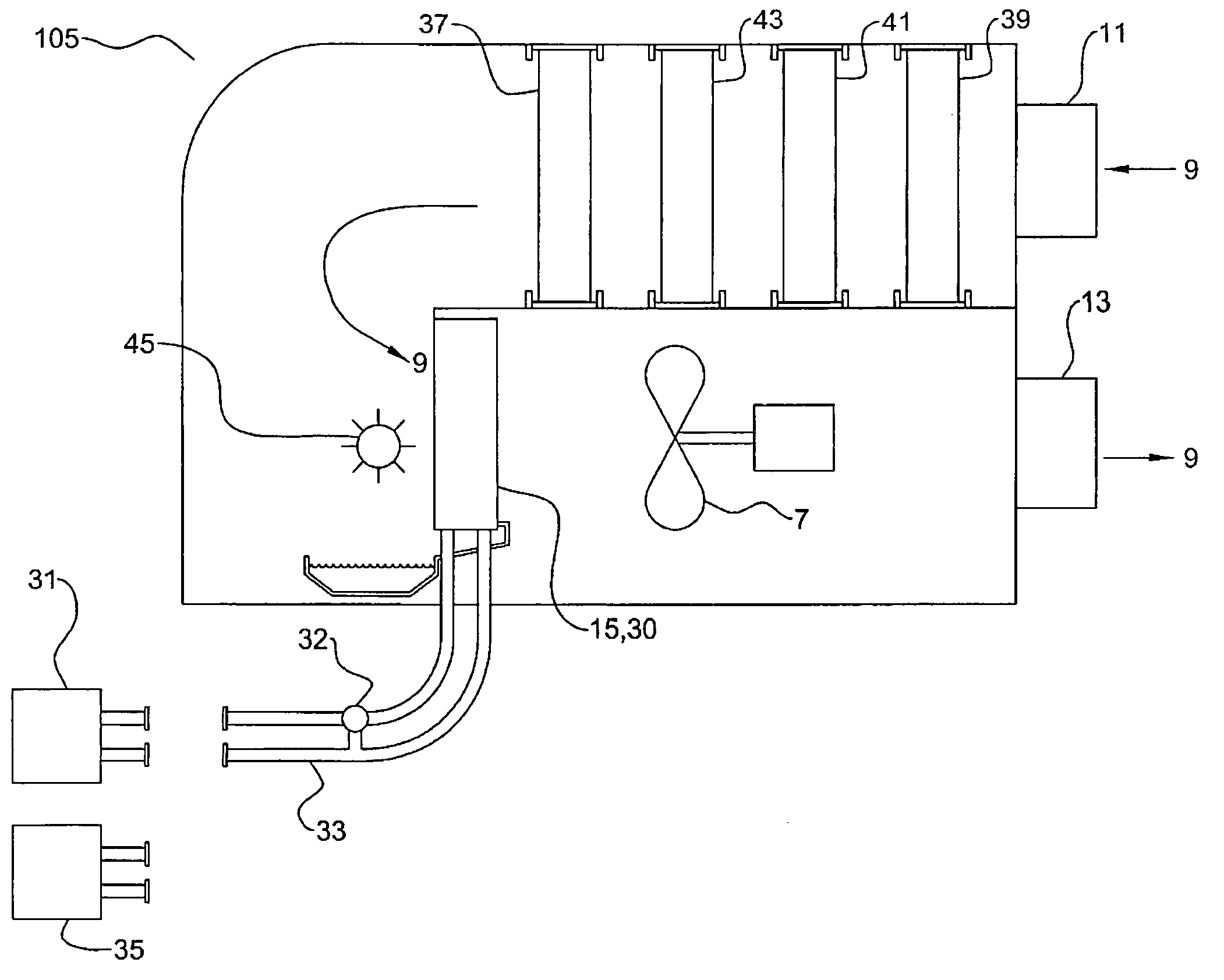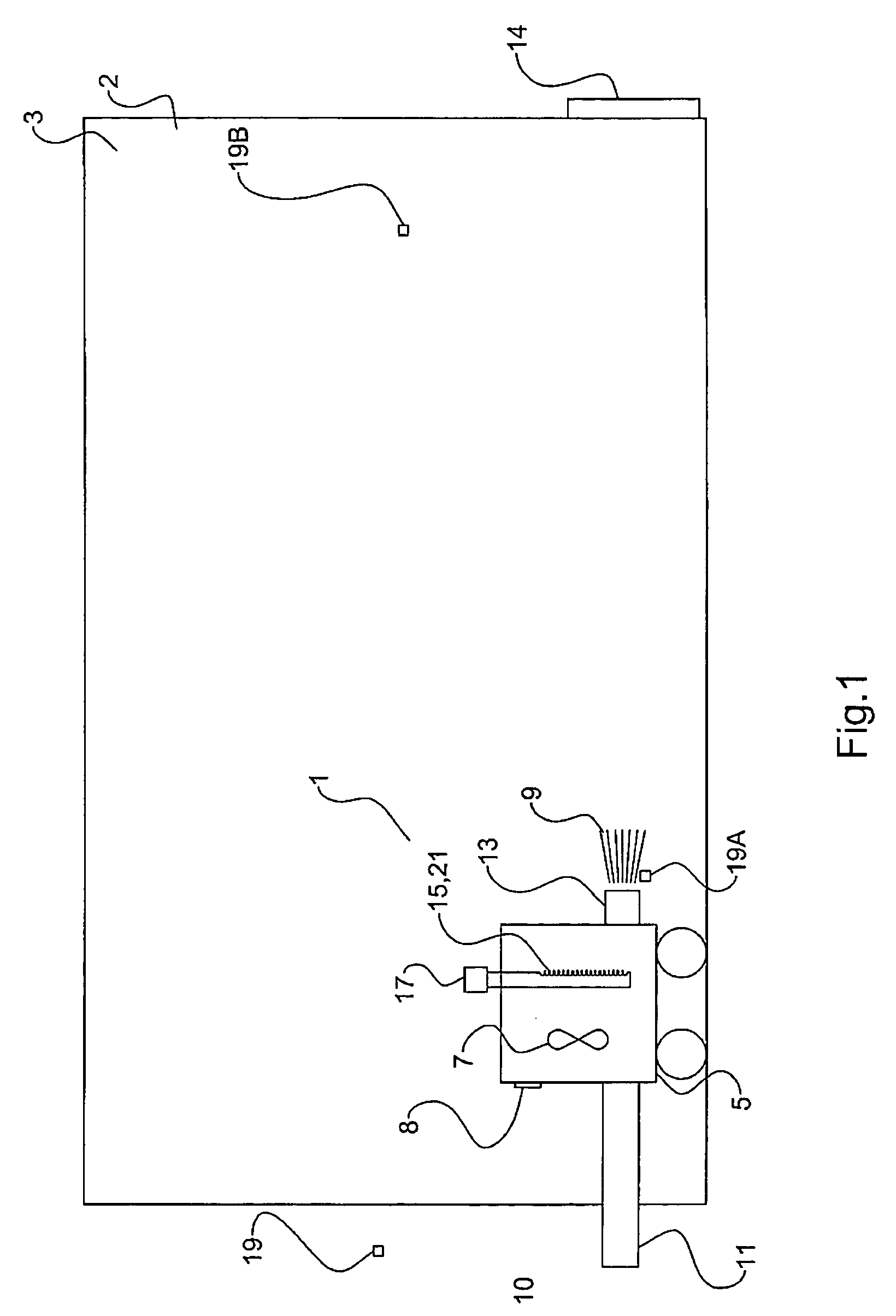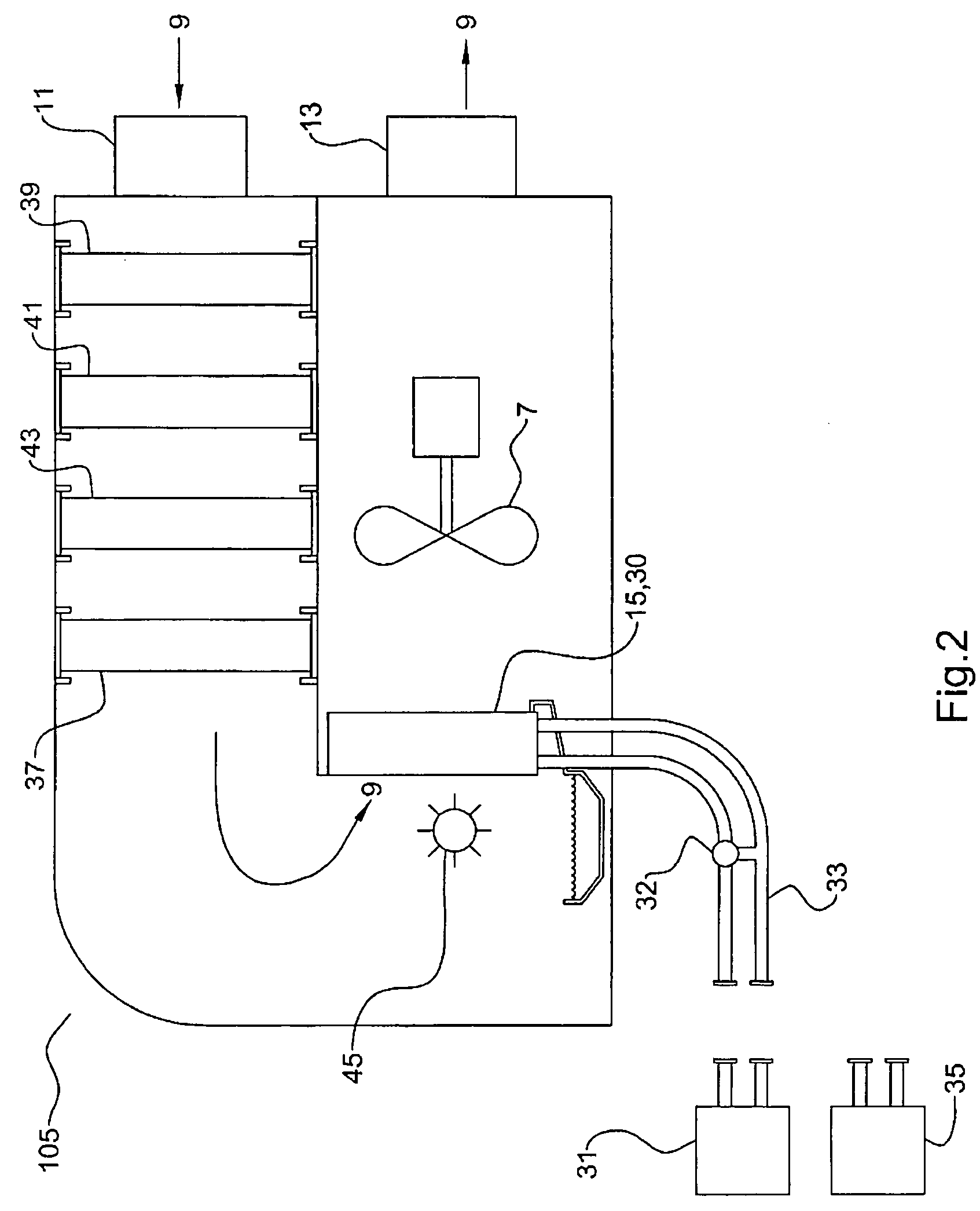Method and apparatus for controlling humidity and mold
- Summary
- Abstract
- Description
- Claims
- Application Information
AI Technical Summary
Benefits of technology
Problems solved by technology
Method used
Image
Examples
Embodiment Construction
[0033]FIG. 1 schematically illustrates an apparatus 1 for reducing a relative humidity of inside air 2 inside an enclosed space 3. The apparatus 1 comprises a portable outside air heat exchanger unit 5 comprising a fan 7 operative to create an air stream 9 by drawing air from an intake 11 and discharging the air through an outlet 13. The intake 11 is adapted to draw outside air 10 from outside the enclosed space 3 and the outlet 13 is adapted to discharge the air stream 9 into the enclosed space 3. The outside air heat exchanger unit 5 is illustrated located inside the enclosed space 3, with the intake 11 located outside, however alternatively the outside air heat exchanger unit 5 could be located outside with the outlet 13 located inside the enclosed space 3. Portability is provided by wheels or the like as illustrated.
[0034] The outside air heat exchanger unit 5 further comprises a temperature adjusting element 15 located in the air stream 9. A heating source is connectable to th...
PUM
| Property | Measurement | Unit |
|---|---|---|
| Temperature | aaaaa | aaaaa |
| Volume | aaaaa | aaaaa |
| Speed | aaaaa | aaaaa |
Abstract
Description
Claims
Application Information
 Login to View More
Login to View More - R&D
- Intellectual Property
- Life Sciences
- Materials
- Tech Scout
- Unparalleled Data Quality
- Higher Quality Content
- 60% Fewer Hallucinations
Browse by: Latest US Patents, China's latest patents, Technical Efficacy Thesaurus, Application Domain, Technology Topic, Popular Technical Reports.
© 2025 PatSnap. All rights reserved.Legal|Privacy policy|Modern Slavery Act Transparency Statement|Sitemap|About US| Contact US: help@patsnap.com



